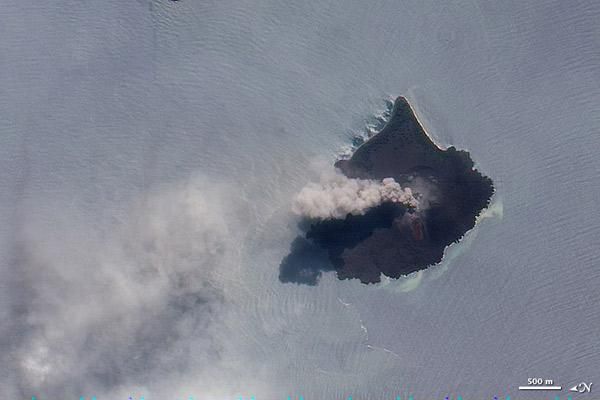
Child of Krakatau Is Still Smoking

Throughout the summer and fall of this year, the volcano Anak Krakatau has erupted hundreds of times a day. But by Nov. 17, when NASA's Earth Observing-1 satellite took this image, activity at the volcano had started to slow at the remnant of one of the most powerful volcanic eruptions in history.
The thick brown plume of ash, steam and volcanic gas rising from Anak Krakatau in this true-color image is a common sight at the volcano. Responsible for one of the largest and most destructive eruptions in Indonesia's history, Krakatau (also sometimes spelled Krakatoa) still erupts frequently. Due to the many eruptions, NASA automatically monitors Krakatau and 99 other volcanoes with the Earth Observing-1 (EO-1) satellite.
Krakatau is considered one of history's most destructive volcanoes . The volcano is most famously known for its eruption in 1883, during which around 40,000 people were killed. The eruption had roughly the same force as 200 megatons of TNT, according to sciencebuzz.com. Ash from the explosion was thrown 50 miles (80 kilometers) into the air, and stayed in the air over Europe and Asia, tinting the sky red from November 1883 to February 1884.
In addition, the explosion spawned tsunamis that were 120 feet (37 meters) in height, and whose results were seen as far away as the West Coast of the United States.
The explosions were so violent that they were heard 2,200 miles (3,500 kilometers) away in Perth, Western Australia. The pressure wave from the final explosion was recorded on barographs around the world, which continued to register it up to 5 days after the explosion.
The eruption decimated the northern two thirds of the island the volcano was on. The current island, known as Anak Krakatau, means "Child of Krakatau" and the volcanic island formed in the caldera that remained after the 1883 explosion.
- Image Gallery: Volcanoes From Space
- The World's Five Most Active Volcanoes
- Another Indonesian Volcano Threatens to Erupt
Sign up for the Live Science daily newsletter now
Get the world’s most fascinating discoveries delivered straight to your inbox.












